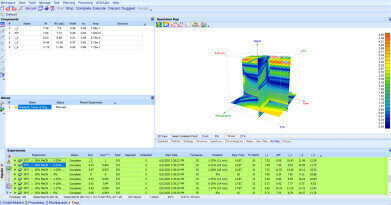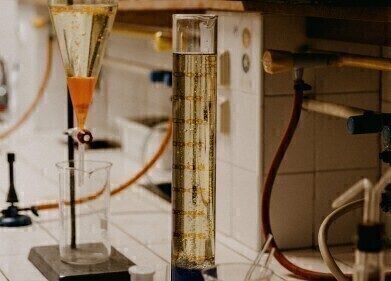Data Handling
Optimisation Starts Before you Run a Single Experiment
Nov 03 2020
Brightly-coloured 3D graphs, relating LC method parameters to method performance - these tools help chromatographers explore their design spaces, choose optimal and robust conditions, and justify their choices to management, customers, and regulators. They cut down on time spent trying conditions by trial-and-error, and give you more confidence that your methods will perform over time.
But getting a good 3D optimisation requires more than running a handful of experiments and clicking ‘graph’. The real work is in the planning.
To find a point that gives good resolution and robustness - within reasonable time - the proper space must be explored. Initial conditions should be chosen to maximise success. That means choosing solvents and pH ranges based on compound physicochemical properties, like pKa. These properties can be determined experimentally, or more likely, as the number of new analytes vastly exceeds experimental capacity, by software prediction. Choosing strong starting conditions also means screening an orthogonal series of columns, to see how different mobile phases interact with your analytes.
Selecting a strong starting point makes it more likely that your optimisation will find useful maxima. Equally important is optimisation accuracy - a good-looking graph is no use if validation experiments can’t confirm its predictions. Here, modelling equations play an important role. Different mathematical relationships best model the influence of different experimental parameters, and knowing which equations to start with and whether or how to change them will help improve prediction accuracy.
But many chromatographers don’t have the time or expertise to fiddle around with developing their own mathematical models. That’s where method-development software, like ACD/AutoChrom, can help. AutoChrom® suggests the best equation for each optimised parameter, but also provides the flexibility for users to try different equations, including polynomials. This combination of expertise and customisability gives improved simulation results.
A good method-development package will also help in planning by suggesting initial starting points based on strong scientific rationale. AutoChrom does this as well, with tools for physicochemical-property prediction, pH selection, buffer calculations, and column comparison.
With a better understanding of how to plan and start modelling, chromatographers can get the results they are looking for from 3D optimisation - developing rational methods that perform well over time.
More information online
Digital Edition
Chromatography Today - Buyers' Guide 2022
October 2023
In This Edition Modern & Practical Applications - Accelerating ADC Development with Mass Spectrometry - Implementing High-Resolution Ion Mobility into Peptide Mapping Workflows Chromatogr...
View all digital editions
Events
May 05 2024 Seville, Spain
May 15 2024 Birmingham, UK
May 19 2024 Brno, Czech Republic
May 21 2024 Lagos, Nigeria
May 23 2024 Beijing, China















